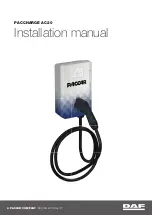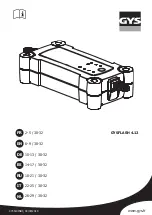
If a child younger than twelve years old and
under 5 ft (1.50 m) in height is traveling in the
vehicle:
R
always secure the child in a child restraint
system suitable for this Mercedes-Benz
vehicle. The child restraint system must be
appropriate to the age, weight and size of
the child.
R
always observe the instructions and safety
notes on "Children in the vehicle"
(
Y
page 57) in addition to the child
restraint system manufacturer's installation
and operating instructions
R
always observe the instructions and safety
notes on the "Occupant Classification Sys-
tem (OCS)" (
Y
page 48)
G
WARNING
The seat belts may not perform their inten-
ded protective function if:
R
they are damaged, modified, extremely
dirty, bleached or dyed
R
the seat belt buckle is damaged or
extremely dirty
R
the Emergency Tensioning Devices, belt
anchorages or inertia reels have been
modified.
Seat belts may be damaged in an accident,
although the damage may not be visible, e.g.
due to splinters of glass. Modified or dam-
aged seat belts may tear or fail, e.g. in an
accident. Modified Emergency Tensioning
Devices could accidentally trigger or fail to
deploy when necessary. This poses an
increased risk of injury or even fatal injury.
Never modify the seat belts, Emergency Ten-
sioning Devices, belt anchorages and inertia
reels. Make sure that the seat belts are
undamaged, not worn out and clean. Follow-
ing an accident, have the seat belts checked
immediately at a qualified specialist work-
shop.
Only use seat belts that have been approved
for your vehicle by Mercedes-Benz.
Proper use of the seat belts
Observe the safety notes on the seat belt
(
Y
page 42).
Every vehicle occupant must observe the fol-
lowing notes to ensure a properly worn seat
belt can provide full protection. Also make
sure that all vehicle occupants are always
wearing the seat belt correctly while the vehi-
cle is in motion.
When fastening the seat belt, always make
sure that:
R
the seat belt buckle tongue is inserted only
into the belt buckle belonging to that seat
R
the seat belt is pulled tight across your body
Avoid wearing bulky clothing, e.g. a winter
coat.
R
the seat belt is not twisted
Only then can the forces which occur be dis-
tributed over the area of the belt.
R
the shoulder section of the belt is routed
across the center of your shoulder
The shoulder section of the seat belt should
not touch your neck or be routed under your
arm or behind your back.
R
the lap belt is taut and passes across your
lap as low down as possible
The lap belt must always be routed across
your hip joints and not across your abdo-
men. This applies particularly to pregnant
women. If necessary, push the lap belt down
to your hip joint and pull it tight using the
shoulder section of the belt.
R
the seat belt is not routed across sharp,
pointed or fragile objects
If you have such items located on or in your
clothing, e.g. pens, keys or eyeglasses,
store these in a suitable place.
R
only one person is using a seat belt
Infants and children must never travel sit-
ting on the lap of a vehicle occupant. In the
event of an accident, they could be crushed
between the vehicle occupant and seat belt.
R
objects are never secured with a seat belt if
the seat belt is also being used by one of
the vehicle's occupants
Also ensure that there are never objects
between a person and the seat, e.g. cush-
ions.
Seat belts are only intended to secure and
restrain vehicle occupants. Always observe the
notes in the "Stowage options/compartments"
Occupant safety
43
Saf
ety
Z
Summary of Contents for SL 450 2019
Page 330: ...328...
















































